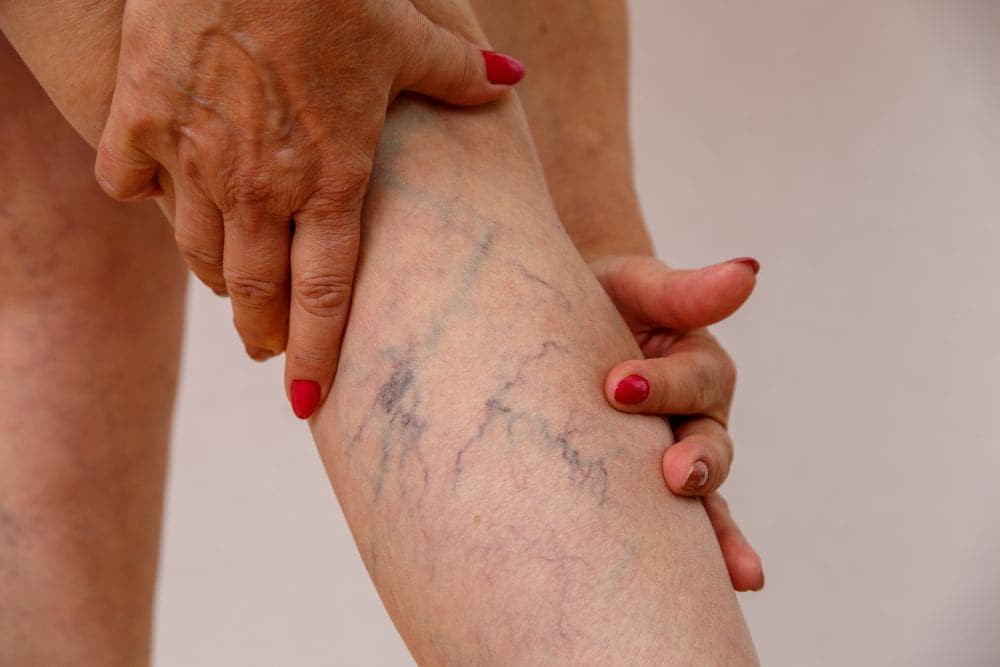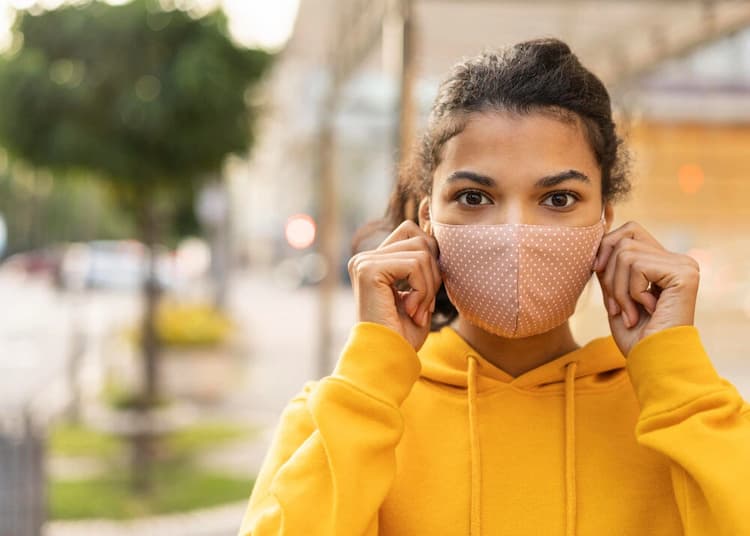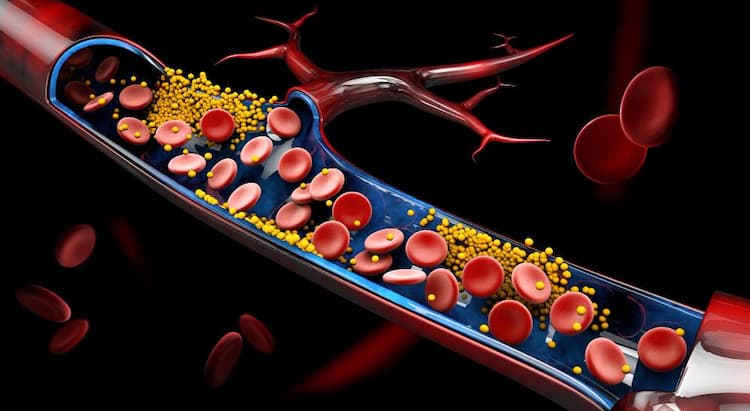What Is Deep Vein Thrombosis Or DVT?

Medically Reviewed By
Dr. Ragiinii Sharma
Written By Meenakshi
on May 9, 2022
Last Edit Made By Meenakshi
on Mar 9, 2024

Deep vein thrombosis or DVT is a condition in which clots develop in the valves of the deep veins of the lower limbs, where in turn it reduces the blood flow and gives rise to swelling, pain, and other symptoms in the affected part.
According to available data, approximately 100 per 100,000 people per year suffer from deep vein thrombosis, although incidence increases with age, recurrent surgeries, and many other risk factors.
However, this condition in a few cases can prove to be highly fatal as the clot sometimes gets a break and starts moving. This broken clot can reach your lungs and alter the respiration system, and its functions lead to life-threatening complications.
What Are The Causes Of Deep Vein Thrombosis Or DVT?
The leading cause of DVT is the presence of a blood clot. This blood clot usually blocks the veins that alter the blood supply to the organs.
The clotting may occur due to several reasons such as;
- Injuries – Any injury can cause damaged blood vessels, resulting in blood clots, which eventually lead to DVT.
- Prolonged Bed Rest/Long Hospital Stay/Paralysis – Few conditions that limit the movement of your body can slow down the flow of blood that can result in the formation of a blood clot.
- Pregnancy – In pregnancy, the increased pressure over the legs and pelvic area, along with the restricted movement, slows blood flow and can result in blood clots.
- Age – Age groups between 50-60 and above are more prone to face DVT.
- Medications Like Oral Contraceptives And Hormonal Therapy – These medicines promote clot formation in your blood that may cause DVT.
- Obesity – People with obesity tend to develop clots in their legs due to pressure on their veins.
- Smoking - Smoking disrupts the normal blood clotting process, making smokers more prone to DVT.
- Chronic Inflammation Diseases – It causes the formation of blood clots by inhibiting the natural anticoagulant pathways.
- Diseases Like HIV AIDS – Studies suggest that HIV AIDS promotes clots in the blood that ultimately give rise to DVT.
What Are The Symptoms Of Deep Vein Thrombosis Or DVT?
As per the clinical data and presentation, Deep vein thrombosis symptoms are only seen in half of the affected ones. Its symptoms vary depending on the location and extent of the clot.
Some of the common DVT symptoms are:
- You will suffer from swelling in your foot, leg, or ankle only on one side.
- You will be affected by cramping pain in your affected part
- The cramping pain is severe
- The affected area feels warmer than the other part
- The skin of your leg appears to be either red or discolored.
- The affected side of the leg is tender, which means that you will experience intense pain when you touch it.
What Is The Diagnosis Of Deep Vein Thrombosis?
As a result of the wide variety of DVT symptoms, diagnostic tests play an essential role in DVT treatment.
There are some tests that your doctor performs to diagnose if you are suffering from DVT, and they are;
- Duplex Ultrasonography – It is a standard test performed for DVT. It is a type of imaging test in which a wave is passed to check the blockage in the veins.
- Coagulation Profile - A coagulation profile study is needed to detect the overall hypercoagulability necessary to start the DVT treatment.
- D-Dimer Blood Test – It is a test to check the amount of D dimer protein. Usually, this protein is released during blood clotting. A positive D dimer test signifies the presence of DVT in your body.
- Venography – In this procedure, dye is injected into veins in your feet or ankles. Then your doctor observes the images of your veins on the X-ray.
Are You At Risk Of Developing Deep Vein Thrombosis Or DVT?
There is a wide range of factors that increase the risk of developing deep vein thrombosis.
Here are some of the risk factors:
- Age- The incidence of DVT increases with age. If you are over 65 years, there is a high chance of getting DVT.
- Orthopedic Surgery- If you have had major orthopedic surgery or fractured a lower limb, you may develop DVT.
- Trauma- Any trauma to the lower limbs increases the risk of DVT. Those who have suffered from major trauma have a six-fold higher risk of DVT than those with minor trauma.
- Cancer- The incidence of DVT is higher in patients with cancer. Moreover, active cancer treatment, such as chemotherapy, has been associated with a higher risk of DVT.
- Other- Immobility, surgery, pregnancy, obesity, varicose veins, etc., are common risk factors for DVT.
What Are The Complications Of Deep Vein Thrombosis Or DVT?
If you have a DVT, you will likely suffer from many complications, some of which could even be life-threatening.
-
- Pulmonary Embolism- It is the most common yet life-threatening complication of DVT. This happens when some part of the clot separates from the vein and travels upwards to the lungs. It may develop quickly with warning symptoms like chest pain, shortness of breath, coughing, fainting, and a fast heartbeat. It is a medical emergency that may even lead to death.
- Chronic Venous Insufficiency- This is usually caused by deep vein thrombosis of a leg vein. It is a condition in which a deep vein cannot work correctly, and the blood stays in the vein instead of flowing back to the heart. It shows symptoms like excessive pain and swelling in the affected leg.
- Post-Thrombotic Syndrome It can also be caused by prolonged deep vein thrombosis. In this syndrome, there is unbearable pain, swelling, redness as well as ulcers and sores. As a result of these complications, a person may have trouble walking and participating in daily activities.
What Is The Management Of Deep Vein Thrombosis Or DVT?
The management of DVT requires oral medications as well as in some; a surgical procedure is also required.
While DVT treatment, anticoagulant medications are readily used by your doctor to reduce the formation of a further blood clot and reduce the size of the blood clot along with other medications.
Some of them are as follows:-
- Clot Busters– These are used when other medications fail to work on DVT. These are given to patients with severe conditions, as these medications may cause heavy bleeding.
- Use Of Medical Filters – They are helpful when you are not able to take medications. These filters are fitted into the large veins, vena cava, and abdomen to improve blood circulation.
- Use Of Compression Stockings – These stockings prevent the blood from clotting. Your doctor may advise you to wear these stockings in the day hours to prevent yourself from associated swelling and clot formation.
What Are The Preventative Measures For Deep Vein Thrombosis Or DVT?
Few easy and daily habits may help in preventing yourself from developing DVT. They are as follows:
- Keep yourself moving. Once you feel like you can walk by yourself without any pain after surgery.
- Quit your sedentary lifestyle and involve good habits like running, jogging, or walking in your daily routine
- Weight management is essential, as obesity gives favorable factors for DVT to develop in your body.
- Don't wear very tight clothes.
What Can We Do To Help You Deal With DVT?
An accurate diagnosis is crucial to prevent the series of complications of DVT and to monitor the efficacy of treatment given to DVT-affected persons.
So, with Redcliffe Life Diagnostics' wide range of diagnostic tests like coagulation profile and routine blood investigation, you can call and schedule an appointment as per your doctor's advice. Our team will pick up required samples from your home and get them tested in advanced labs.
As well as easy access to patient support, our lab offers fast lab results.
Things to remember even after the treatment
- Do take your medications regularly as directed by your doctor.
- Eat the diet that is strictly prescribed by your doctor, as certain foods can worsen your situation by either causing clots in your body or by causing bleeding.
- Keep yourself moving, as moving keeps your blood flow normal and prevents you from forming blood clots.
- Do wear compression stockings, as it helps in proper circulation of blood.
- Do watch for excessive bleeding. In case you find excessive bleeding after the treatment, it may be due to the side effects of blood thinners. In such cases, report your condition immediately to your doctor.
Conclusion
Deep Vein Thrombosis or DVT is a serious condition that offers a wide range of life-threatening complications. But with accurate diagnosis and accurate time management, the complications are preventable.
Also, with more advancements in medical procedures, DVT is manageable with the full cooperation of the affected person. Moreover, awareness, accurate diagnosis, and management are the key points to reduce the risk of life-threatening complications.
Disclaimer:
The blog content has been posted as a piece of information and awareness only. The content provided in this blog, or in any linked materials, are not proposed and should not be taken as medical advice. Redcliffe Labs strongly recommends users to consult with their health care providers to make any medical or health-related decision.



